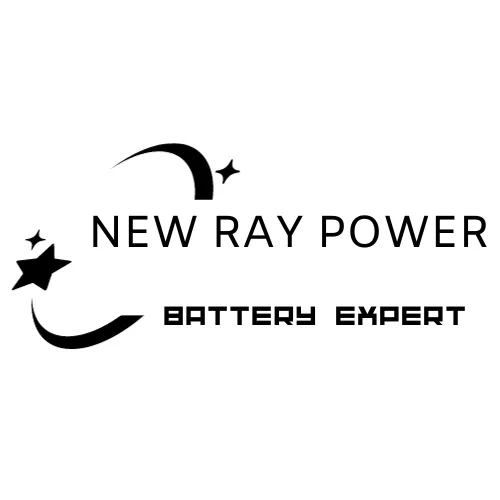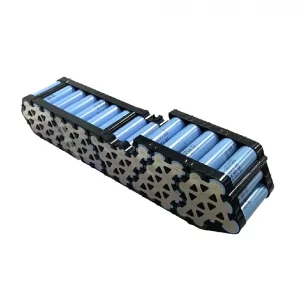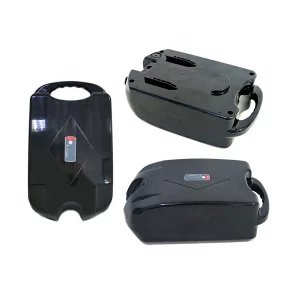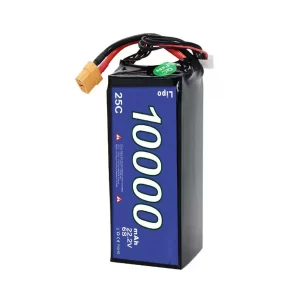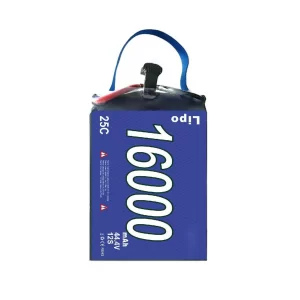Properly disposing of lithium-ion batteries in the increasingly digital world has become a pressing concern. These batteries in many everyday devices can pose environmental risks if not discarded properly. This article provides a comprehensive guide on responsible disposal methods, regulatory considerations, and the importance of recycling initiatives, empowering you to make eco-conscious decisions that contribute to a sustainable future. Join us as we navigate this critical aspect of modern technology stewardship.
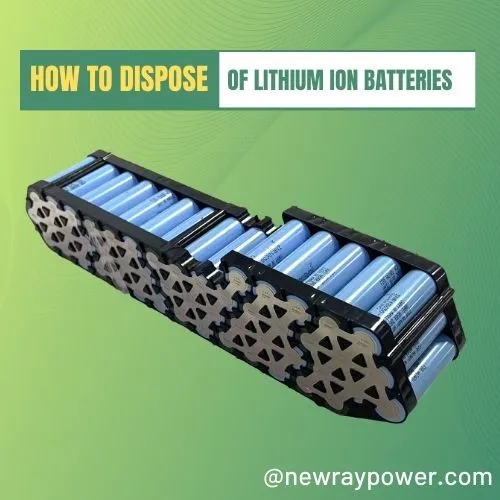

How to Dispose of Lithium Ion Batteries
- Never dispose of lithium-ion batteries in regular trash or recycling bins.
- Take used batteries to a recycling facility or use a battery recycling service.
- Handle damaged or leaking batteries cautiously, using non-conductive tape and placing them in an airtight container.
- Inquire about recycling programs at local recycling centers or through manufacturers’ websites.
- Contact local waste facilities to inquire about their acceptance of lithium-ion batteries.
- Ask retailers about their take-back programs for lithium-ion batteries.
- Understand the importance of proper disposal to avoid environmental harm and conserve resources.

Section 1: Introduction
Lithium-ion batteries, a power source for many modern technologies, are becoming prevalent daily. With this ubiquity, however, comes the crucial issue of their disposal. It is of utmost importance to address this, considering the significant environmental and health implications improper disposal can cause.
1.1: The Lithium-ion batteries and their increasing use
The energy-storage landscape has been significantly transformed due to the increased use of lithium-ion batteries in various applications. Predominantly used in consumer electronics, their usage has transcended into automotive-type batteries owing to their high energy density and longevity. However, these benefits pose challenges when it comes to spent lithium batteries. Therefore, the battery disposal decision tree becomes integral to the disposal process. Swollen lithium batteries add another layer of complexity, requiring specialized handling. This rising use of lithium-ion batteries has amplified the need for efficient lithium-ion battery recycling methods to protect the environment and serve humanity by mitigating harmful waste. Thus, understanding the correct disposal methods for these powerful energy sources is essential.
1.2: Importance of proper disposal due to environmental and health concerns
An alarming number of used lithium-ion batteries end up in landfills each year, posing significant environmental and health risks that necessitate proper disposal methods. Lithium-ion batteries contain hazardous materials that, if improperly disposed of, can leach into the ground, contaminating our soil and water. This contamination can adversely affect wildlife, ecosystem health, and human health. Furthermore, the recycling process for lithium-ion batteries can recover valuable materials and reduce our need for virgin resources, contributing to a more sustainable society. Therefore, understanding and implementing proper disposal of these batteries becomes crucial. Promoting adequate removal, we help protect the environment, serve our communities, and address the pressing environmental and health concerns associated with improper disposal.

Section 2: Understanding Lithium-Ion Batteries
A fundamental understanding of composition, history, and potential hazards is crucial to disposing of lithium-ion batteries properly. This section will examine the critical components of these batteries and their historical evolution. Furthermore, it will shed light on the unique properties and potential risks associated with Lithium-ion batteries.
2.1: The lithium-ion battery composition and components
A complex ingredient works together within each lithium-ion battery to store and release electrical energy. This composition is the key to the functionality of lithium-ion li-ion batteries, and improper disposal can harm the environment.
- The anode and cathode, the battery’s positive and negative terminals, are integral components. They’re typically made from lithium-based batteries interacting with the electrolyte to produce electricity.
- The electrolyte is a lithium salt solution that ferry ions between the anode and cathode during charge and discharge cycles.
- The separator is a thin insulating layer that prevents the anode and cathode from touching and causing a short circuit.
Understanding these components and their roles in battery manufacturing will better equip us to dispose of lithium-ion batteries safely.
2.2: Brief history of their development and widespread usage
The development and widespread usage of lithium-ion batteries have a fascinating history, and their evolution has had a significant impact on multiple sectors, ranging from telecommunication to electric vehicles. As a type of battery, lithium batteries were first commercialized in the 1990s by a device manufacturer, Sony, revolutionizing the portable electronics market with their high-capacity batteries. They offered a much-needed solution to the growing demand for portable electronics’ longer-lasting, rechargeable battery types. Their high energy density, long lifespan, and light weight made them the preferred choice for various applications. Today, their usage extends beyond portable electronics to large-scale applications like electric vehicles, making lithium batteries a cornerstone of our modern mobile world.
2.3: The potential hazards and unique properties associated with lithium-ion batteries
Despite their widespread use and undeniable advantages, one must not overlook lithium-ion batteries’ potential hazards and unique properties.
- Potential hazards: These batteries can pose a fire risk if damaged or improperly disposed of. The lithium inside can interact with oxygen in the air, leading to potentially dangerous situations.
- Unique properties: Lithium batteries are compact, lightweight, and highly efficient, making them the preferred choice for many portable electronic devices.
- Disposal and recycling: Disposal of batteries is subject to hazardous waste regulations. Recycling batteries for environmental protection and to recover valuable materials is crucial.

Section 3: Environmental Impact and Importance of Proper Disposal
The improper disposal of lithium-ion batteries has grave consequences, significantly impacting our environment. This can trigger the release of toxic substances and heavy metals into our soil and water sources, introducing various environmental challenges. Additionally, exposure to these hazardous materials can adversely affect human health and the well-being of our wildlife.
3.1: The harmful effects on the environment caused by improper battery disposal
Improper disposal of lithium-ion batteries can give rise to significant environmental harm, underlining the importance of appropriate disposal methods. The harmful effects are multifold, impacting both the environment and human health. Lithium-ion batteries contain toxic metals like cobalt and nickel, which can leach into the soil and water bodies if not disposed of properly, threatening ecosystems and contaminating our water supply.
In particular, improper battery disposal can lead to:
- Soil degradation: Toxic metals can cause harm to plants and animals, disrupting the food chain.
- Water pollution: Contaminated water harms aquatic life and can jeopardize human health.
- Air pollution: Incinerating lithium-ion batteries can release toxic fumes into the atmosphere, contributing to air pollution.
Therefore, correct battery disposal is crucial to protect our environment.
3.2: The release of toxic substances and heavy metals into soil and water sources
Lithium-ionWhen improperly disposed of, lithium-ion batteries release toxic substances and heavy metals into the environment, contaminating soil and water resources. This affects the immediate environment and has far-reaching impacts on ecosystems and human health.
Our collective responsibility to dispose of these batteries properly cannot be overstated. The table below illustrates the potential environmental impacts of improper disposal:
| Contaminant | Impact on Soil | Impact on Water Sources |
|---|---|---|
| Heavy Metals | Stunts plant growth, reduces soil fertility | Can contaminate drinking water, affecting health |
| Lithium | Can change soil structure, affecting plant life | Toxic to aquatic life, it can cause water acidification |
| Cobalt | It can harm microorganisms in the soil, affecting nutrient cycles | Harmful to aquatic life, it can bioaccumulate |
Let’s serve our environment by properly disposing of lithium-ion batteries.
3.3: Impact on human health and wildlife due to exposure to hazardous materials
Exposure to hazardous materials resulting from the incorrect disposal of lithium-ion batteries poses significant health risks to humans and wildlife. This stems primarily from releasing harmful chemicals into the environment, ultimately contaminating our air, water, and soil – the elements sustaining life.
- Human Health Impact: When humans come into contact with these hazardous materials through the food chain or by direct exposure, they may suffer from various health conditions, including skin diseases, organ damage, and even cancer.
- Wildlife Impact: Wildlife is also severely affected. Animals can ingest these harmful substances, leading to reproductive issues, genetic mutations, and death.
- Ecosystem Balance: The accumulation of hazardous materials can disrupt the delicate balance of ecosystems, threatening biodiversity and the survival of various species.

Section 4: Legal and Regulatory Considerations
As we progress in our discussion, it is imperative to understand the legal and regulatory aspects surrounding the disposal of lithium-ion batteries. These considerations include a comprehensive overview of local, state, and federal disposal regulations and their responsibilities to manufacturers and consumers. Additionally, it is crucial to discuss the penalties associated with improper disposal and non-compliance, underlining the importance of adhering to these rules.
4.1: Local, state, and federal regulations regarding battery disposal
The correct disposal of lithium-ion batteries is governed by various local, state, and federal regulations, each designed to protect the environment and public health. These regulations dictate the hazardous and universal waste requirements for battery disposal. They are put in place to ensure that proper management practices are followed when disposing of lithium-ion batteries, thus fostering a culture of environmental responsibility.
- Local Regulations: These may vary by city or county, but they typically require residents to dispose of batteries at designated recycling or hazardous waste facilities.
- State Regulations: Some states have specific laws for battery disposal, which may include banning them from landfills.
- Federal Regulations: These regulations often categorize lithium-ion batteries as universal waste, imposing specific handling and disposal requirements.
4.2: The responsibility of manufacturers and consumers in adhering to proper disposal practices
While manufacturers are legally obligated to follow specific standards and regulations when disposing of lithium-ion batteries, consumers also play a critical role in adequately discarding these materials. The responsibility of manufacturers involves the offering of battery recycling options and the creation of take-back programs. On the other hand, consumers are responsible for disposing of these batteries at a local hazardous waste disposal facility or a recycling center.
| Responsibility | Method |
|---|---|
| Manufacturers | Provide battery recycling options |
| Consumers | Utilize hazardous waste disposal facilities |
| Manufacturers | Create take-back programs |
| Consumers | Educate themselves on proper disposal practices |
| Both | Comply with regulations for lithium-ion batteries |
Adherence to these practices ensures the well-being of our environment and serves the greater good of all.
4.3: The penalties for improper disposal and non-compliance with regulations
Regarding legal and regulatory considerations, manufacturers and consumers must be keenly aware that non-compliance with established protocols for disposing of lithium-ion batteries can lead to severe penalties. Therefore, it is paramount to adhere to these rules.
Improper disposal of lithium-ion batteries is environmentally detrimental and legally risky. To mitigate these risks, consider the following:
- Regulations often require that waste batteries be disposed of at designated recycling centers to prevent toxic leakage.
- Non-compliance with regulations can result in hefty fines or legal action, significantly impacting individuals and businesses.
- Compliance is not just about avoiding penalties for improper disposal; it’s about contributing to a healthier environment and a safer world.

Section 5: Methods for Proper Disposal of Lithium-Ion Batteries
In this section, we will outline the methods for proper disposal of lithium-ion batteries. We will first discuss safe storage practices to prevent damage or malfunction before moving on to the correct procedures for transporting these batteries. Lastly, we will guide you on how to dispose of non-recyclable batteries at hazardous waste facilities.
5.1: Guidelines for safely storing lithium-ion batteries, preventing physical damage, overheating, or short-circuiting
To ensure their safe disposal, you must ensure that lithium-ion batteries are stored to minimize the risk of physical damage, overheating, and short-circuiting. Proper storage of these batteries is essential for maintaining safety and extends the battery’s lifespan before removal.
To store lithium-ion batteries safely, consider these guidelines:
- Always keep batteries in a cool, dry place. Exposure to high temperatures can lead to overheating, short-circuiting, or other damage.
- Prevent physical damage by storing batteries in a protective case or container. This can prevent punctures or dents that might compromise the battery’s integrity.
- Avoid storing batteries near metal objects. Metals can cause short circuits, leading to overheating or even fires.
With careful handling and storage, we can ensure the safe disposal of lithium-ion batteries.
5.2: Directions for transporting lithium-ion batteries, including packaging requirements and restrictions
When considering the safe transportation of lithium-ion batteries, it’s crucial to understand the specific packaging requirements and restrictions. These guidelines ensure safety during transit and prepare the batteries appropriately for their final disposal. In the following sections, we will discuss the removal of these batteries at local waste facilities, recycling centers, and retail take-back programs, providing information about each method’s process and how to access these services.
5.2.1: Local Waste Facilities: Description and resources to locate these facilities
Several local waste facilities are equipped to dispose of lithium-ion batteries safely, providing essential resources and guidelines for proper packaging and transportation.
- Recycling Center: A dedicated facility for recycling various materials, including lithium-ion batteries.
- Household Hazardous Waste Collection: These programs specifically target hazardous waste from households.
- Treatment Facilities: These specialized centers handle the safe disposal and treatment of hazardous materials.
5.2.2: Recycling Centers: Process explanation and how to find a certified center
We must understand that recycling centers play a critical role in safely disposing of lithium-ion batteries, and knowing how to locate a certified center is essential for proper battery disposal. Certified centers and battery retailers accept lithium button cell batteries for recycling, ensuring these hazardous wastes are handled correctly and protecting our community and the environment.
5.2.3: Retail Take-Back Programs: Overview and examples of retailers who offer these programs
Retail take-back programs and recycling centers offer an effective and environmentally friendly method for disposing of used lithium-ion batteries, and many major retailers participate in these initiatives.
Examples of such retailers include:
- Electronics stores: Known for accepting rechargeable batteries and lithium-ion batteries.
- Auto part stores Often have take-back programs for battery resources.
- Several big-box retailers Regularly run retail take-back programs for recycling purposes.
5.3: Disposal Methods for Non-Recyclable Batteries: Guidelines for packaging and labeling before disposal, information on hazardous waste facilities
There are four primary methods for adequately disposing of non-recyclable lithium-ion batteries, including specific guidelines for packaging and labeling before removal and information on utilizing hazardous waste facilities. These disposal methods for non-recyclable batteries emphasize the importance of safety and environmental responsibility.
In the table below, we provide a summary of these methods:
| Method | Description |
|---|---|
| Packaging | All batteries should be individually bagged or have their terminals taped to prevent short circuits. |
| Labeling | Label packages as ‘Used Lithium-ion Batteries Not for Recycling |
| Hazardous Waste Facilities | Dispose of lithium-ion batteries at designated facilities to ensure they are handled safely and responsibly. |

Section 6: Precautions When Disposing Lithium-Ion Batteries
As we move forward in our exploration of lithium-ion battery disposal, it is crucial to address safety precautions. This section will outline the necessary measures when dealing with damaged or non-recyclable batteries at home and provide a detailed guide for individual disposal practices. We will also discuss how to neutralize lithium-ion cells before disposal safely.
6.1: Safety measures to consider when handling damaged or non-recyclable batteries at home
Handling damaged or non-recyclable lithium-ion batteries at home requires adherence to a specific set of safety measures to prevent potential harm or damage. It is essential to understand how to handle both damaged and non-damaged batteries for the safety of everyone involved.
The following steps should be taken:
- Use safety devices such as gloves and goggles to protect against potential chemical leaks or sparks from battery terminals.
- Keep lithium-ion batteries separate from other household hazardous waste to prevent reactions.
- For non-recyclable batteries at home, consult your local waste management facility for disposal guidelines to avoid environmental damage.
6.2: Step-by-step instructions for properly disposing of lithium-ion batteries yourself
Before you begin the disposal process of lithium-ion batteries, you must understand and follow these precautions for your safety and the preservation of our environment. Properly disposing of lithium-ion batteries involves a few critical steps. First, identify the battery packs you wish to dispose of. Ensure that they are not damaged or leaking. Do not throw these batteries in your trash; they can cause environmental harm. Instead, look for local recycling options available for lithium-ion batteries. Many electronic stores and waste disposal facilities have dedicated programs for this purpose. Lastly, always wear protective gear when handling these batteries. Following these step-by-step instructions ensures the safe and responsible disposal of lithium-ion batteries.
6.3: Recommended methods for neutralizing lithium-ion battery cells before disposal
To ensure safe disposal, it is vital to neutralize lithium-ion battery cells using recommended methods. This neutralization process prevents potential chemical reactions or fires during removal, which can be hazardous to individuals and the environment.
- First, consider placing the lithium-ion batteries in a fireproof container to protect yourself and your surroundings before starting the neutralization process.
- Second, use a solution of baking soda and water to neutralize the battery cells. This common household item can effectively balance the acidic components within the battery.
- Finally, always handle lithium-ion batteries with care. Wear gloves and safety glasses to protect yourself during the disposal process.

Section 7: DIY Battery Disposal: Precautions and Methods
This section will explore the safety precautions when handling non-recyclable or damaged batteries at home. We will provide a detailed, step-by-step guide for independently disposing of lithium-ion batteries. Lastly, we will suggest effective methods for neutralizing lithium-ion battery cells before disposal to ensure safety and environmental protection.
7.1: Safety precautions to consider when handling damaged or non-recyclable batteries at home
One should exercise extreme caution when handling damaged or non-recyclable batteries at home due to the potential risks associated with improper disposal. The materials within lithium-ion batteries can be significantly hazardous when the battery’s integrity is compromised.
To ensure safety, consider the following precautions:
- Always wear protective gloves and eyewear. Damaged batteries can leak corrosive materials that can cause skin irritation or eye injuries.
- Keep the batteries away from children and pets. Many incidents occur due to the ingestion of non-recyclable batteries.
- Use a fire-resistant container for storage. Lithium-ion batteries can cause fires if not handled properly.
7.2: Step-by-step instructions for properly disposing of lithium-ion batteries yourself
Proper disposal of lithium-ion batteries requires meticulous adherence to a series of steps, ensuring safety for the individual and the environment. First, ensure the batteries are fully discharged to prevent any potential hazards. Second, place the batteries in a non-conductive bag or container. Third, take them to a local recycling center or a retailer that offers battery recycling services. There are also additional management options for properly disposing of batteries, such as mail-in recycling programs. These step-by-step instructions aim to assist you in safely and effectively disposing of lithium-ion batteries. Remember that proper disposal protects the environment and contributes to a sustainable future.
7.3: Recommended methods for neutralizing lithium-ion battery cells before disposal
Before you embark on the disposal process, it is crucial to neutralize lithium-ion battery cells; for this, you must follow specific methods to ensure safety and efficacy. Lithium-ion batteries, if not handled correctly during disposal, can be hazardous due to their reactive nature.
Here are the recommended methods for neutralizing lithium-ion battery cells:
- Discharge Completely: Fully discharge the batteries to eliminate any remaining energy.
- Saltwater Soak: Submerge the batteries in a saltwater solution for two weeks to further neutralize the cells.
- Tape Terminals: Use non-conductive tape to cover the battery terminals to prevent short circuits.
Following these steps will help you safely dispose of lithium-ion batteries, reducing potential harm to the environment and others. Proper battery disposal is a responsibility we should all embrace.

Section 8: Recycling Initiatives and Future Innovations
As we explore Section 8, we broach the significant subject of recycling initiatives and emerging innovations. The importance of recycling lithium-ion batteries as an eco-friendly disposal alternative becomes clear as we examine the process. Simultaneously, we will consider technological advancements that continue to reshape and improve these recycling methods.
8.1: Importance of recycling as an eco-friendly alternative to disposal
In lithium-ion battery disposal, one must not overlook the vital role that recycling can play as an eco-friendly alternative. Emphasizing the importance of recycling, in contrast to mere removal, can significantly reduce the environmental effects of battery scrap.
- Recycling lithium-ion batteries converts a potential environmental hazard into a resource. It extracts valuable metals and prevents them from leaching into the environment.
- The process reduces the need to mine new materials, conserving natural resources and reducing the associated environmental impacts.
- Recycling initiates a circular economy promoting sustainability by transforming battery scrap into new or other products.
This approach serves the environment and future generations, providing them with a cleaner and safer world to inherit.
8.2: The recycling process for lithium-ion batteries
Understanding the recycling process of lithium-ion batteries necessitates a detailed exploration of the various steps involved, from collection and sorting to the recovery of valuable materials.
| Steps | Description | Key Words |
|---|---|---|
| Collection | Retrieving items such as single-use batteries from household hazardous waste. | items, household hazardous, single-use batteries |
| Sorting | I am distinguishing between different types of batteries to facilitate targeted processing. | types of batteries |
| Material Recovery | I am extracting valuable materials from the batteries for reuse to reduce the demand for virgin resources. | material recovery |
Through these steps, we dispose of these batteries safely and harness their potential for further use. Understanding and participating in recycling initiatives offers an avenue to serve others by contributing to environmental preservation and resource conservation. Future innovations are expected to streamline this process further.
8.3: The emerging technologies and advancements in battery recycling
Emerging technologies are pushing the boundaries of what is possible in battery disposal and recycling. These innovations are anticipated to make disposing of lithium-ion batteries more efficient and environmentally friendly. The following section will explore these advancements and their potential to revolutionize how we handle battery waste.
8.3.1: Anticipation of a future where battery disposal is more efficient and environmentally friendly
Advancements in technology are paving the way for a future where the removal of lithium-ion batteries could become more efficient and environmentally friendly. The anticipation is high, and the focus is on the following:
- Development of advanced recycling processes for lithium-ion batteries
- Creation of more efficient battery disposal methods
- Implementation of environmentally friendly disposal practices to reduce harmful impact.

Section 9: Conclusion
As we draw our discussion to a close, it is helpful to reiterate the criticality of correct disposal methods for lithium-ion batteries. We will now reflect on the necessity for implementing responsible battery disposal practices and the role each of us can play in this. The final part of our conversation will underscore the substantial impact our actions can have on promoting environmental sustainability.
9.1: The importance of proper disposal of lithium-ion batteries
Understanding the necessity of correctly disposing of lithium-ion batteries is crucial to environmental preservation and personal safety. Improper disposal can release harmful metals into the environment, which can cause significant damage.
- Lithium-ion batteries should never be thrown in the trash. They are categorized as universal waste and must be treated accordingly.
- Recycling sites are available for the proper disposal of these batteries. They have the necessary equipment and knowledge to handle this waste effectively.
- Always consider the environment and the safety of others when disposing of lithium-ion batteries.
9.2: Call to action for responsible battery disposal practices
Given the environmental and safety implications, we strongly urge everyone to adopt accountable methods for disposing of lithium-ion batteries. This call to action is not merely a suggestion; preserving our planet and ensuring our communities’ safety is necessary.
Let’s consider the following table, designed to evoke your empathy and understanding towards responsible battery disposal:
| Consequences of Irresponsible Disposal | Benefits of Responsible Disposal |
|---|---|
| Environmental degradation | Preservation of natural resources |
| Potential fire hazards | Enhanced community safety |
| Waste of valuable metals | Recovery and recycling of applicable materials |
| Health risks from toxic leaks | Protection of human health |
| Legal penalties | Compliance with regulations |
9.3: The significance of individual contributions towards environmental sustainability
No matter how small, Every act of responsible disposal of lithium-ion batteries contributes significantly towards the larger goal of environmental sustainability. As we conclude, it’s crucial to emphasize the significance of individual contributions.
My final thoughts on how to dispose of lithium-ion batteries are as follows:
- Each one of us has a role to play in ensuring environmental sustainability. The way we dispose of our batteries can make a significant difference.
- By adopting responsible disposal practices, we not only promote environmental health but also ensure the safety of our loved ones.
- Continuous learning and awareness about the best disposal practices are critical to making a positive impact.
Let’s all strive to make a difference in our small ways. The planet will thank us.

Section 10: FAQs (Frequently Asked Questions)
In this final section, we will address some of the most commonly asked questions regarding the disposal of lithium-ion batteries. These questions range from the correct removal methods to dealing with damaged batteries and even locating recycling programs or facilities. By answering these questions, we aim to clarify further the importance and proper techniques for disposing of such storms.
10.1: Correct method for disposing of lithium-ion batteries
In addressing the proper disposal of lithium-ion batteries, it’s crucial to understand the correct way to prevent environmental harm. These batteries power many electronic devices, from cell phones and digital cameras to cordless power tools. Improper disposal can lead to harmful substances leaking into our environment.
To ensure safe disposal of lithium-ion and other non-alkaline household batteries, adhere to these guidelines:
- Never dispose of them in your regular trash or recycling bin. They contain dangerous substances that can cause environmental damage.
- Take your used batteries to a recycling facility. Most cities have facilities that accept these types of batteries.
- Consider using a battery recycling service. These services ensure that your batteries are disposed of safely and responsibly.
10.2: Guidance on how to handle damaged or leaking batteries
Often, users encounter situations where their lithium-ion batteries become damaged or leak, and understanding the necessary steps for safe handling becomes paramount. Damaged or leaking batteries from devices like cordless phones or video cameras require careful attention. Firstly, avoid direct contact with the leak, as the chemical substance can be harmful. Using non-conductive tape, safely wrap the entire battery to prevent further leakage. Once secured, place the damaged battery into an airtight container. This will provide an additional layer of protection and prevent the leakage from spreading. Remember, when it’s time to dispose of lithium-ion batteries, they should be taken to a designated recycling facility. This ensures the safety of both the individual and the environment.
10.3: Inquiries about recycling programs, local waste facilities, or retail take-back programs for lithium-ion batteries
Understanding and participating in recycling programs, local waste facilities, or retail take-back initiatives for lithium-ion batteries is critical for environmental sustainability, and this section aims to answer the most frequently asked questions concerning these topics.
- Can lithium-ion batteries be recycled? Lithium-ion batteries can and should be recycled, as improper disposal can harm the environment. Inquiries about recycling programs can be made at local recycling centers or through manufacturers’ websites.
- Can local waste facilities accept lithium-ion batteries? Most local waste facilities have specific collection programs for hazardous waste, including lithium-ion batteries. It is recommended to contact your local facility for detailed disposal instructions.
- Do retailers offer take-back programs? Some retailers offer take-back programs for lithium-ion batteries. Always ask at the point of purchase about such initiatives. Participating helps support a circular economy and safeguards the environment.
10.4: Importance and methods of correctly disposing of lithium-ion batteries
While lithium-ion batteries power many of our everyday devices, it is crucial to understand the importance and methods of correctly disposing of these batteries, which we will explore through frequently asked questions. The importance lies in the potential harm these batteries can cause to the environment, including soil and water contamination if improperly disposed of. Correctly disposing of lithium-ion batteries also helps conserve valuable resources and reduces the demand for extracting raw materials. Disposal methods vary but typically include dropping them off at designated recycling centers or participating in take-back programs. Understanding and implementing these methods can contribute to a healthier and safer environment.
